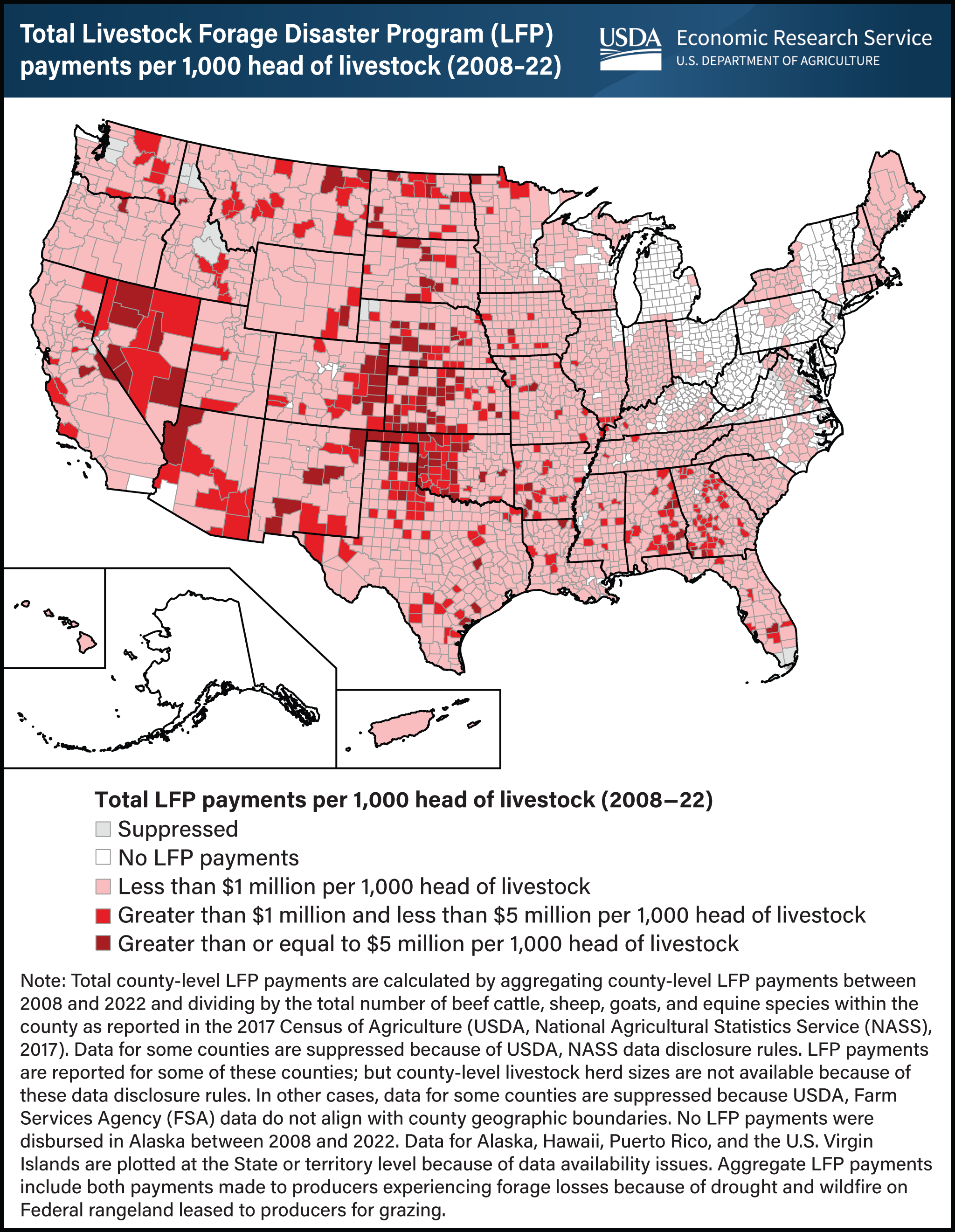Livestock Forage Disaster Program payments concentrated in the Western and Central United States
- by R. Aaron Hrozencik
- 1/31/2024

Drought imposes significant costs on the U.S. agricultural sector, particularly for livestock producers who rely on precipitation to grow forage. USDA’s Farm Service Agency’s (FSA) provides payments to livestock producers whose pastures and rangeland are impacted by drought through the Livestock Forage Disaster Program (LFP). The LFP was established by the 2008 Farm Bill and uses eligibility criteria based on county-level drought conditions reported by the U.S. Drought Monitor. FSA annually sets species-specific per head LFP payment rates designed to cover about 60 percent of monthly feed/forage costs for livestock. Livestock species eligible for LFP payments include traditional livestock, such as beef and dairy cattle, as well as more exotic varieties, such as reindeer and ostriches. Between 2008 and 2022, the program disbursed more than $12 billion (in 2022 dollars) of payments to livestock producers. Counties with the largest aggregate LFP payments per 1,000 head of livestock are concentrated primarily in the Western, Southern, and Central United States, where drought conditions are generally more severe and common. About 20 percent of counties in the continental United States received no LFP payments between 2008 and 2022. These counties are primarily located in urban regions and the relatively more humid Eastern United States. This chart was drawn from the USDA, Economic Research Service report The Stocking Impact and Financial-Climate Risk of the Livestock Forage Disaster Program, published January 2024.

